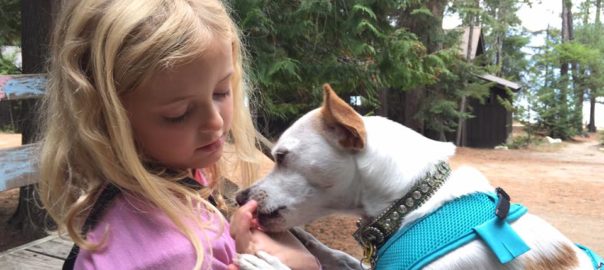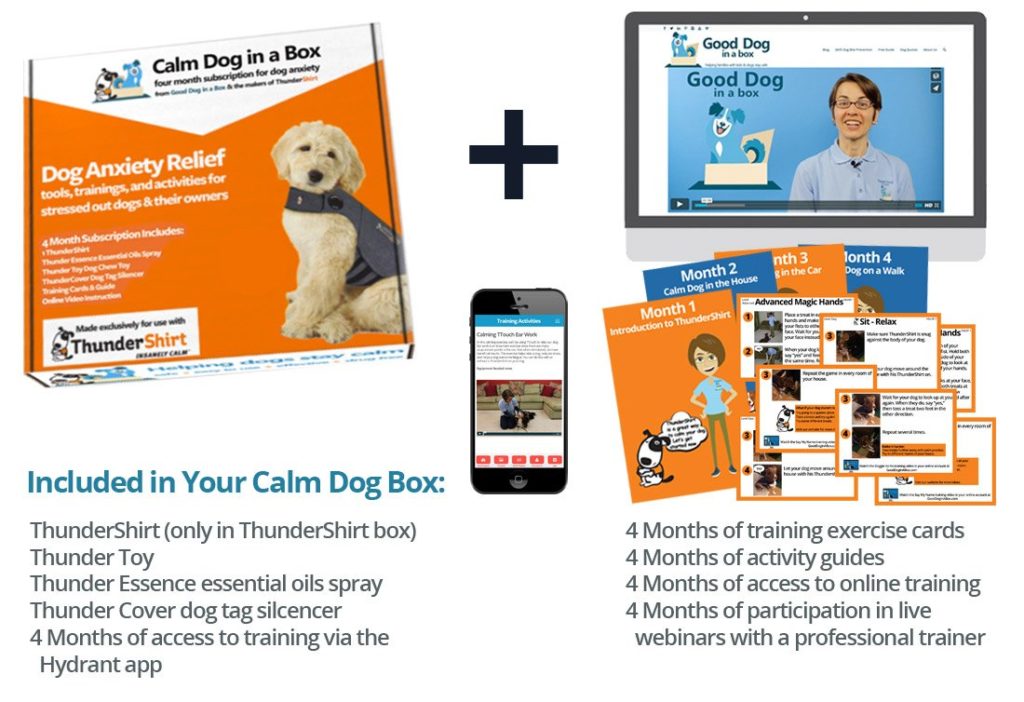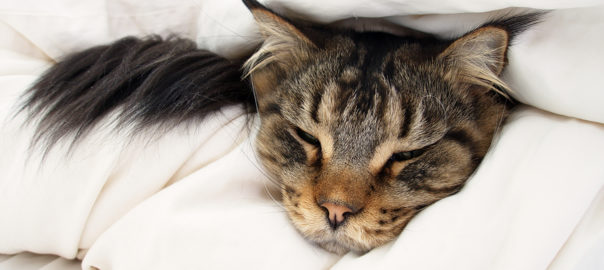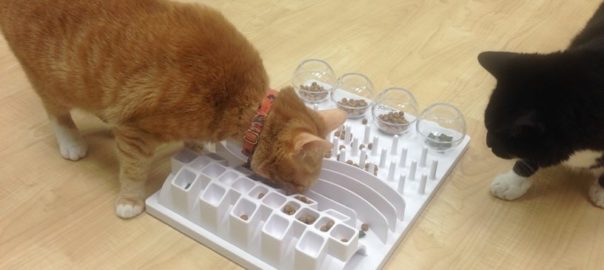Fear Free has been the most important cause I’ve worked for during my nearly 40 years as a veterinarian. I started it out as something for other veterinary professionals, but I quickly realized this had to be an equal partnership with our patients’ humans or it wouldn’t work.
That’s why we recently launched a “sneak preview” of our Fear Free Happy Homes program to my readers and those who follow Fear Free on Facebook. Tomorrow, at 12:01 AM Eastern Time on Friday, Sept. 1, 2017, we’re opening up our first Fear Free Friday deal: A discounted subscription to family-centered dog training and activities from Good Dog in a Box:
Good Dog in a Box is a monthly subscription of reward-based dog training tools and games, delivered to your house and your computer, for families with dogs and kids ages 5 to 12.
Each month you get a delivery from the US Postal Service at your house that includes a dog training tool, basic dog training exercises that are kid friendly, games and activities, dog bite prevention lessons, and information on how to be a responsible dog owner. You also get monthly deliveries to your computer and app of each of our dog training exercises in a fun, video that shows kids with a professional dog trainer practicing each training exercise that’s in the box.
Our program promotes positive reinforcement training, Tellington T-Touch, dog safety, teamwork, trust, listening skills, and responsibility. Available in a month-to-month, six month, or twelve month subscription in a lite and full version, starting at just $11.89 a month with your Fear Free Friday discount!
You’ll also be able to get the same discount on everything on the site, including their Calm Dog in a Box.
To be able to view the deal, you need to register for the site, which is free. After that, you can unlock the deal here at 12:01 AM Eastern Time on Friday, Sept. 1.
You’ll want to sign up quickly, however, because the deal is only open for 24 hours. If you miss it, don’t worry — a new deal will open up on Oct. 6, featuring an amazing offer from Sleepypod, manufacturer of award-winning and safety-certified pet travel and sleep accessories.
There’s plenty of great information to help you and your pets live happy, healthy lives — training tips, resources to prevent and deal with anxiety in your pets, opportunities to make your home more enriching for your pets. Please visit www.fearfreehappyhomes.com and see what we have to make your pets’ lives better today.





